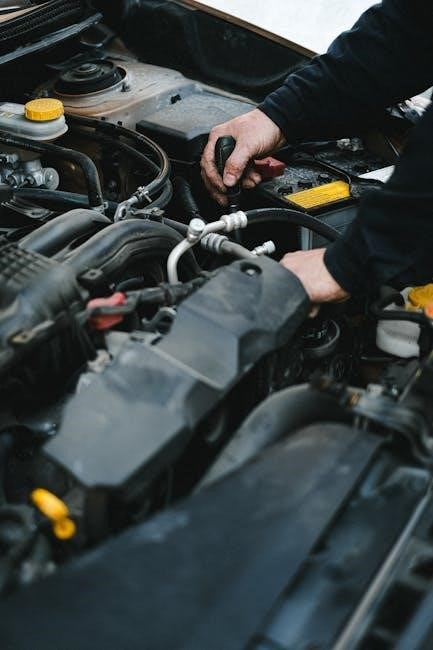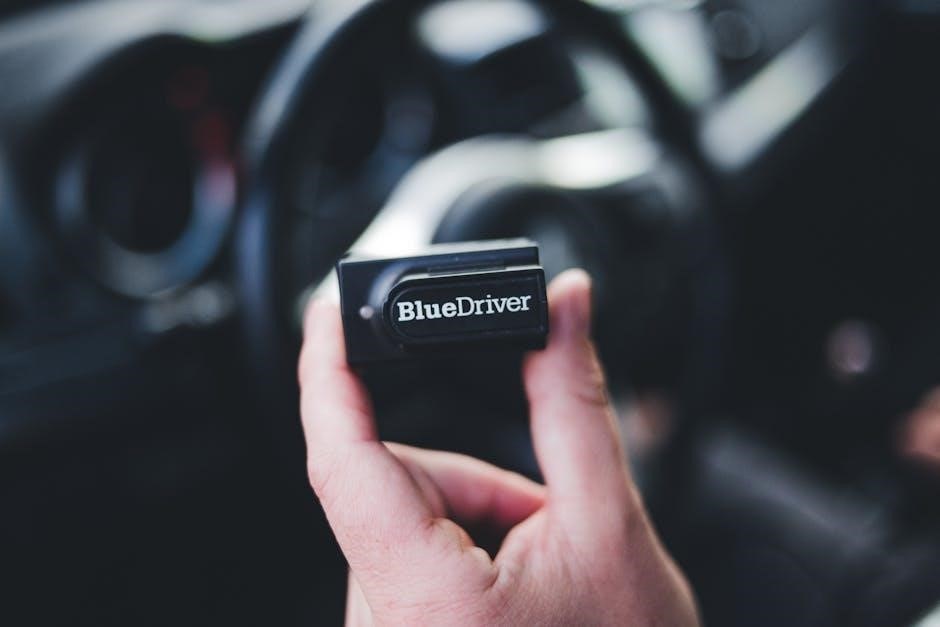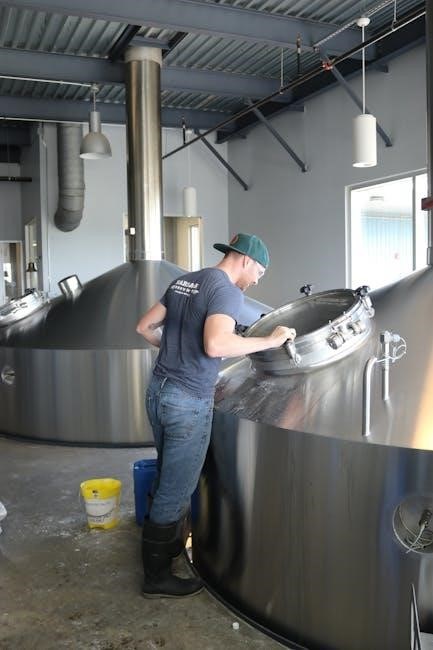The Maine Inspection Manual provides guidelines for vehicle inspections, ensuring road safety and compliance with state regulations, as outlined on the official government website, with updated information.
Overview of Maine Vehicle Inspection Program
The Maine Vehicle Inspection Program is a statewide initiative that aims to ensure all vehicles on the road are safe and compliant with regulations. The program is overseen by the Maine State Police and outlines specific requirements for vehicle inspections. According to the official government website, the program covers various aspects of vehicle safety, including brakes, tires, and emissions. The goal is to reduce the number of accidents on the road and promote a safer driving environment. The program also provides guidelines for inspection stations and technicians, ensuring that all inspections are conducted fairly and consistently. By following the guidelines outlined in the Maine Inspection Manual, vehicle owners can help ensure their vehicles are safe and compliant with state regulations. The program is an important part of maintaining road safety in Maine.

Purpose of the Safety Inspection
The purpose is to ensure vehicles are safe to operate on public roads, as stated in the official Maine Inspection Manual guidelines and regulations online.
Goal of the Maine Motor Vehicle Inspection Program
The goal of the Maine Motor Vehicle Inspection Program is to enhance road safety by regulating and enforcing inspection standards. This program aims to ensure that all vehicles on the road meet the minimum safety requirements, reducing the risk of accidents and injuries. The program achieves this by setting standards for vehicle inspections, licensing inspection technicians, and regulating inspection stations. By doing so, the program promotes a safer driving environment for all road users. The goal is also to provide a fair and consistent inspection process, ensuring that all vehicles are inspected to the same standards, regardless of where they are inspected in the state. This helps to maintain public trust in the inspection process and promotes compliance with safety regulations. Overall, the goal of the program is to make Maine’s roads safer for everyone.
Maine Inspection Manual Rules and Regulations
Regulations and rules are outlined in the manual for inspection stations and technicians to follow and comply with state laws and regulations perfectly.
Updated Rules and Regulations for Maine’s Motor Vehicle Inspection Program
The updated rules and regulations for Maine’s Motor Vehicle Inspection Program are designed to improve road safety and ensure compliance with state laws. The program outlines specific requirements for inspection stations and technicians, including equipment maintenance and record-keeping. The rules also cover vehicle safety standards, such as brake and tire inspections, to prevent accidents and reduce the risk of injuries. Additionally, the program provides guidelines for inspecting vehicles with specialized equipment, such as motorcycles and trailers. By following these updated rules and regulations, inspection stations and technicians can help ensure that vehicles on Maine’s roads are safe and compliant with state regulations, reducing the risk of accidents and promoting public safety. The program is regularly reviewed and updated to reflect changes in vehicle technology and safety standards.

Vehicle Inspection Requirements
Vehicle inspection requirements include safety checks on brakes, tires, and lights to ensure roadworthiness and compliance with state regulations and laws.
Rejecting a Vehicle
The process of rejecting a vehicle is outlined in the Maine Inspection Manual, which provides guidelines for inspection technicians to follow.
The manual states that a vehicle must be rejected if it does not meet the minimum safety standards set forth by the state.
This includes issues such as faulty brakes, worn-out tires, or defective lighting.
The inspection technician must provide the vehicle owner with a report detailing the reasons for the rejection.
The owner is then responsible for making the necessary repairs to bring the vehicle up to code.
The Maine Inspection Manual also provides information on the procedures for re-inspecting a vehicle after repairs have been made.
The goal of the rejection process is to ensure that all vehicles on the road are safe and compliant with state regulations.
This helps to prevent accidents and protect the public.
The manual is updated regularly to reflect changes in safety standards and regulations.

Inspection Station Requirements
Inspection stations must comply with Maine statutes and rules, maintaining equipment and facilities to ensure accurate inspections and safety, as per official guidelines and regulations always.
Responsibilities of Inspection Station Owners and Managers
Inspection station owners and managers have various responsibilities, including ensuring compliance with Maine statutes and rules, maintaining equipment and facilities, and overseeing inspection technicians. They must also keep accurate records and reports, as required by the state. Additionally, they are responsible for providing a safe and clean environment for inspections to take place. The owners and managers must also ensure that all inspection technicians are licensed and trained to perform inspections according to the Maine Inspection Manual. They must also be aware of any updates or changes to the manual and ensure that their station is in compliance. By fulfilling these responsibilities, inspection station owners and managers play a crucial role in ensuring the safety and integrity of the inspection process in Maine, which is essential for road safety and compliance with state regulations;

Importance of Annual Inspection
Annual inspections ensure vehicles are safe and roadworthy, reducing accidents and maintaining road safety, as per the Maine state regulations and guidelines outlined online.
Ensuring Road Safety
The primary objective of the Maine inspection manual is to ensure road safety by identifying vehicles that pose a risk to other road users. This is achieved through regular inspections, which help to identify potential hazards and prevent accidents. The manual outlines the procedures and standards for inspecting vehicles, including the criteria for passing or failing an inspection. By enforcing these standards, the state of Maine aims to reduce the number of accidents on its roads and create a safer driving environment for all users. The inspection process is an essential component of this effort, and the manual provides guidance on how to conduct inspections effectively. Overall, the goal of the Maine inspection manual is to promote road safety and protect the public by ensuring that vehicles are properly maintained and operated.
The Maine inspection manual is a valuable resource, providing essential information and guidelines for vehicle inspections and road safety, as outlined on official government websites regularly.
The Maine inspection manual is a comprehensive guide that outlines the rules and regulations for vehicle inspections in the state of Maine. The manual provides detailed information on the inspection process, including the requirements for safety inspections and the standards for vehicle maintenance. It also outlines the responsibilities of inspection station owners and managers, as well as the role of inspection technicians. The manual is regularly updated to reflect changes in state regulations and industry practices. By following the guidelines outlined in the manual, vehicle owners can ensure that their vehicles are safe and compliant with state regulations. The manual is an essential resource for anyone involved in the vehicle inspection process in Maine, providing a clear and concise summary of the state’s inspection requirements and regulations. The manual is available online and can be accessed by visiting the official government website.
